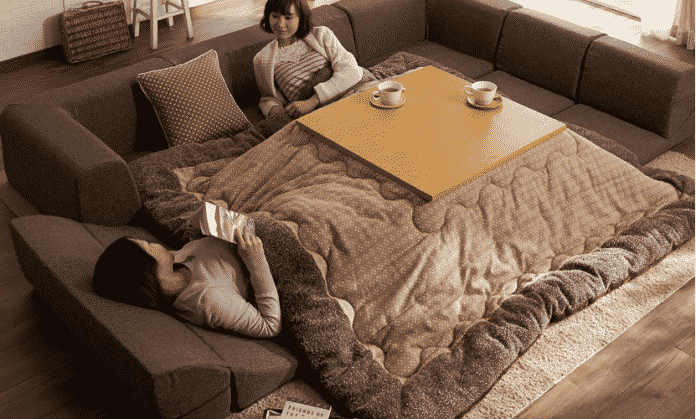When you move to a country that is among one of the world’s most technologically advanced, you might think that the elements and weather might not be able to affect you all that much. Unless a railway bridge gets torn down by a typhoon, trains in Japan are always right on time (and even if disaster strikes, they are maximally slightly delayed). While the summer is sweltering hot and humid, almost every building – home, train station, shop, cafe and restaurant – is an oasis of cool due to the ever-present air con.
In winter, though, it’s a completely different thing. Japans spans quite a wide latitude with locally varied climate, but with the exception tropical Okinawa, all of them have a winter where temperatures hover around or drop below freezing. Yet, the most reliably heated thing in your average Japanese household will be… the toilet seat.
There’s no central heating in Japan, although almost all of Japan has been experiencing cold winters – always, not just since this century. Japanese people have different explanations for this:
‘Because houses are all made of wood.’
Hang on… houses made of wood? That doesn’t seem to detain Scandinavia from having proper heating. Heating does not mean that the wooden house will go up in flames, either. Besides: most houses that were built in the last 30-40 years are not made of wood, especially not in the large Japanese cities.
‘Because the electricity is too expensive’.
There seems to be a common perception in Japan that the only way to heat is via electric heaters which consumes a lot of electricity, but certainly not more than the air-con in summer. Then main point seems to be: most of the world uses gas for heating their houses. While Japan is a country with very few natural resources, it uses gas for many other purposes and could surely use it to heat buildings.
So what can you do when you’re living in Japan in the winter and the temperature in your house is exactly the same as outside? And if you plan to visit: does this mean that visiting in winter is a big no-no? Luckily, there are some options:
Heated blankets. On everything.
Enter the kotatsu… it’s a heated blanket, but with a twist. In Japanese homes, you traditionally sit on the floor on flat tables. A kotatsu is a giant heated blanket that is designed to be put on top of your table, so if you tuck your leg in underneath the table, you’ll be warm. There are two things wrong with this: a) at some point, your legs will go numb b) you can’t spend all day sitting at the table. Apart from this, there are the usual heated blankets you can use in bed… or try to wrap them around you all day.
Dress accordingly.
Wearing your coats and jackets indoors might be the most sustainable solution… use layers and wear tights/leggings, long underwear, socks, t-shirts, tops, hoodies and if need be, your coat indoors.
Take a hot bath.
Maybe the most satisfying way to keep warm, but just like the kotatsu, they drawback is not only that you can’t do it all day, but that the water gets cold after a while. If all else fails, you could also spend a lot of time in the bathroom on that lovely heated seat. Or get on the next flight to tropical Okinawa or Taiwan…





















